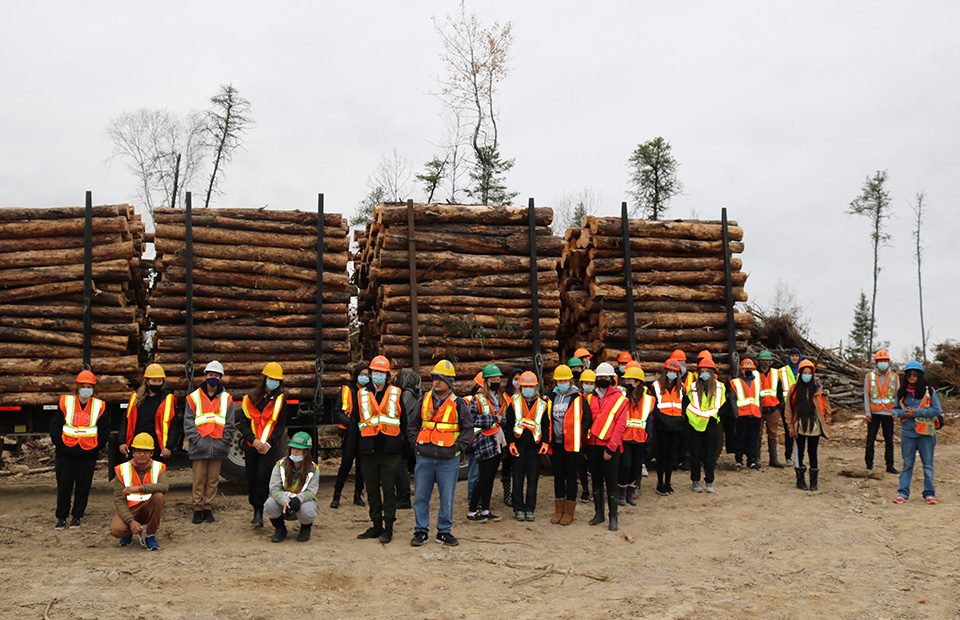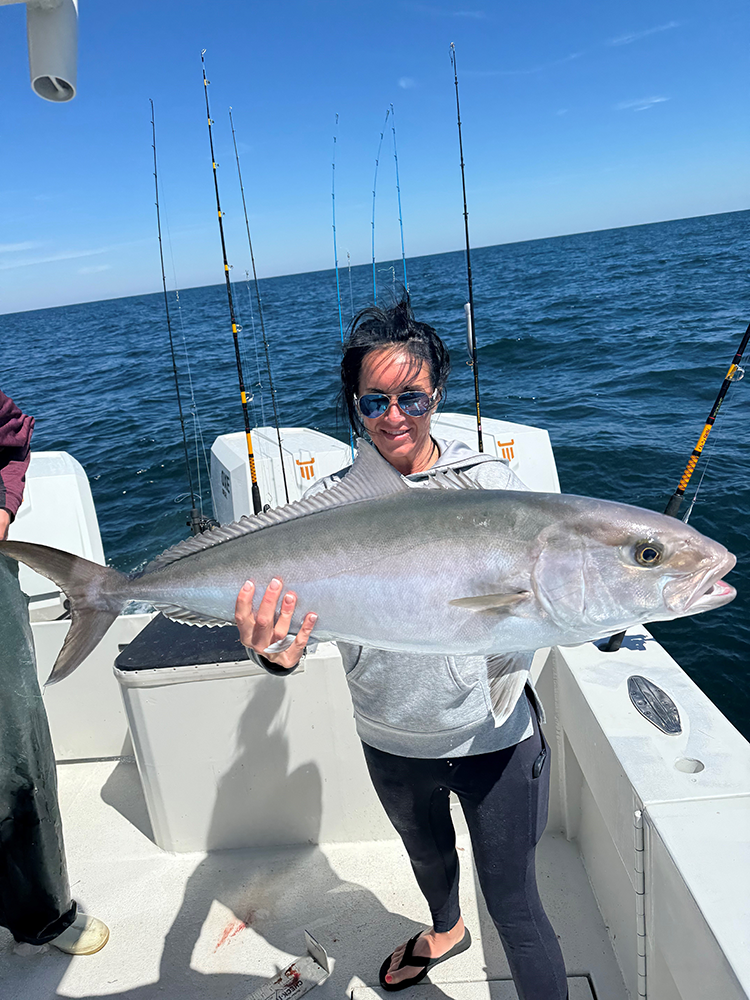
On a cold, wet, windy day in late October, more than 50 ninth graders from Beaver Brae Secondary School visited one of our active harvest sites near Kenora, Ontario.
They watched a forwarder load a log truck, toured stands of different age classes, planted seedlings and learned about forestry jobs, sustainability, and an industry tightly linked to the region’s economic vitality.
“It’s fun seeing students learn by doing,” says Rob Neil, an operations forester who spent the day with several colleagues guiding the students, answering questions and — in many cases — opening a few eyes.
THE FOREST THROUGH THE TREES
“It surprised a lot of students that harvested stands are replanted,” says Maddie Kennedy, operations forester. “They just assumed we let the forest regenerate on its own.”
Maddie explained the benefits and strategies of replanting to the students, and how natural regeneration can be inconsistent. She emphasized that seedlings reestablish forests faster than seeds, and that a growing, early-stage forest provides many benefits. For example, even young forests prevent erosion and soil runoff, filter drinking water and provide various wildlife habitats.
Another surprise for most students was the many steps we take to protect wildlife, including no-harvest zones and operational blackout windows to protect threatened and endangered species. The group was also curious about common animals we encounter in our forests.
“Most of the kids came from families with hunters,” Rob says. “There were a lot of questions about how harvesting affects the movement of deer, moose and caribou. Deer and moose are ‘edge’ species and prefer transitional zones between different cover types, ages, disturbances, etc. Caribou are very different and generally prefer more continuous and consistent cover types.”
Our Rob Neil discusses timber cruising.
Our Matt Wilkie and two Beaver Brae students plant one-year-old black spruce trees at a freshly cut harvest site.
MANAGING FOREST HEALTH
All the questions from students gave Rob a chance to talk about forest age, cover types, and wildlife species habitat preferences.
“We talked about how various disturbances such as fire, insect infestations, windstorms and harvesting can affect the forest and the wildlife that live within those impacted areas,” he says.
“From there, we got into hunting locations, about how the students’ parents might go to the same spot to hunt year after year, and how hunting areas can be affected over time as a forest matures or is impacted by those same disturbances.
At one point, the students cored trees of different ages and compared how growth rings differed during excellent and challenging growing conditions. They also evaluated a 90-year-old tree and discussed how trees in older forests compete with each other, which can reduce growth rates while increasing the risks of disease and pests.
“We pointed out how good forest management can help reduce fire risks in the boreal forest and helps keep them healthy,” Rob says.
Another surprise for students involved the strict guidelines we follow regarding what we are allowed to log.
“They didn’t realize that we must adhere to long-term plans filed with the government in terms of where and how much we harvest,” Maddie says.
Matt Wilkie and Chianti Steele-Brown from OYEP/Outland (backs to camera) discuss tree planting with students, including why we do it and how to do it properly and safely. In the red hardhat facing the camera on the far right is Beaver Brae teacher Gary Lynch. A former tree planter, the field day was his brainchild.
A CYCLE OF GROWTH AND RENEWAL
Miisun, a First Nations-owned integrated resource management company in Kenora, oversees the crown forest management license and our harvest plans in the area. These plans consider forest needs more than a century into the future. Miisun representatives participated in the field trip and provided perspective on long-term forest management, sustainability and Indigenous representation.
A large percentage of Beaver Brae students are of Indigenous heritage. Unfortunately, many of the school’s graduates struggle to find meaningful long-term employment after graduation.
To address this challenge, mentors such as Chianti Steele-Brown work with the Outland Youth Employment Program, a Canada-wide network that brings land-based education, training and work opportunities to high school-aged Indigenous youth. The organization was founded by Outland, a Miisun and Weyerhaeuser contractor, more than two decades ago.
“I was thrilled to talk with Beaver Brae students from all backgrounds during the forest day,” Chianti says. “We talked about job opportunities in forestry, career paths and education requirements. We did a little work, learned a lot and had some fun.”
Chianti helped bring the field visit to life by connecting our Kenora team with Beaver Brae teacher Gary Lynch, a former tree planter who had the initial idea of taking students into the woods. She hopes the forest day will inspire at least a few students to consider a forestry career. But even if it doesn’t, the students walked away with a greater understanding of the forest products industry, forests and the world around them.
“The best thing about the forest day was that students saw the cycle of forestry from harvesting to replanting and everything in between,” Chianti says. “I expect they’ll remember that for a long time to come.”
A local TV station also covered the forest day. You can watch their reporting here.


